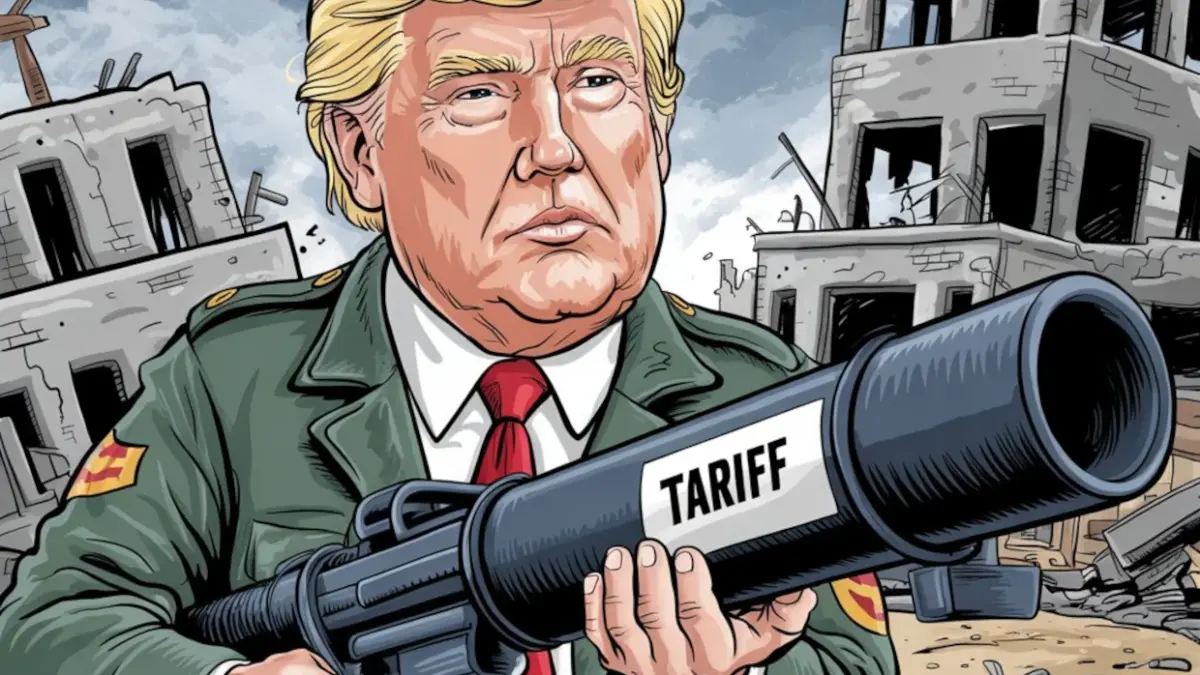In a surprising twist of global trade dynamics, India may emerge as a beneficiary of President Donald Trump’s recent tariff impositions, which have sent shockwaves through international markets. The new reciprocal tariff structure, announced on April 2 as part of a national emergency declaration, could strengthen India’s competitive position in key export sectors, particularly textiles and electronics.
Tariff Advantage Creates New Opportunities
Under the new policy, the United States has imposed country-specific tariffs at rates proportional to each nation’s tariffs on American goods. For India, this means a 26% tariff rate—significantly lower than competitors like Bangladesh (37%), Vietnam (46%), and China (34%).
This differential tariff structure creates a clear competitive advantage for Indian exporters. A $100 Indian textile product will now cost American buyers $126 after tariffs, compared to $137 for a similar Bangladeshi product.
Textiles: Capitalizing on Bangladesh’s Challenges
India’s textile industry, which has long competed with Bangladesh, stands to gain substantial market share. Bangladesh’s garment exports, which reached $27.95 billion in FY20 compared to India’s $15.48 billion, have recently been disrupted by political unrest, with reports indicating an 11% decline in exports to the US in early 2024.
The combination of Bangladesh’s internal challenges and higher tariffs presents a significant opportunity for Indian textile manufacturers. Reports indicate increased inquiries from American buyers looking to diversify their supply chains.
Government sources confirm plans to increase budget allocations for the textile sector, aiming to capitalize on this unexpected advantage in the American market.
Electronics: Undercutting Vietnam and China
The electronics sector offers perhaps an even more promising outlook. With Vietnam facing a steep 46% tariff and China at 34%, India’s 26% rate gives its electronics exports a notable edge in price-sensitive segments.
This could accelerate India’s ambitions in electronics manufacturing. The country’s goal of reaching $180 billion in electronics exports by 2025 suddenly seems more achievable.
Industry analysts point out that this advantage aligns perfectly with the global “China plus one” diversification strategy, potentially accelerating investment in Indian electronics manufacturing.
Pharmaceutical Exemption: A Critical Win
Perhaps most significant for US-India trade relations is the exemption of Indian pharmaceuticals from the tariff structure. This decision acknowledges India’s crucial role as a supplier of nearly 47% of generic drugs to the American market.
The pharmaceutical exemption ensures continued affordability of medicines for American consumers while maintaining India’s competitive position in this vital sector. Analysts view this as a pragmatic decision that benefits both nations.
Health economists estimate that imposing tariffs on Indian pharmaceuticals would have added billions to US healthcare costs, making the exemption a strategic necessity.
Challenges Amid Opportunities
Despite these advantages, experts caution that the overall increase in import prices could dampen US consumer demand across all categories. Additionally, India still faces competition from countries with even lower tariffs, such as the UK at 10%.
The situation presents a complex landscape that requires nimble strategy. Indian exporters need to capitalize on their relative advantages while preparing for potential shifts in US consumer behavior due to broadly higher prices.
Looking Ahead
As businesses adapt to this new trade reality, Indian export industries are positioning themselves to seize the moment. Government officials indicate plans for targeted export promotion campaigns in the US market, focusing on sectors where India now enjoys a tariff advantage.
What initially appeared as a threat may actually contain significant opportunities. Trade officials are reportedly working closely with industry to ensure Indian exporters can maximize their competitive position under this new tariff regime.
For American consumers and businesses, the tariff structure creates a complex new calculus in sourcing decisions, with Indian goods potentially offering better value in key categories compared to traditional suppliers like China, Vietnam, and Bangladesh.
As the global trade landscape continues to evolve under President Trump’s policies, India’s strategic position—bolstered by lower tariffs in key sectors and the crucial pharmaceutical exemption—may reshape trade flows in ways few anticipated when the policy was first announced.



